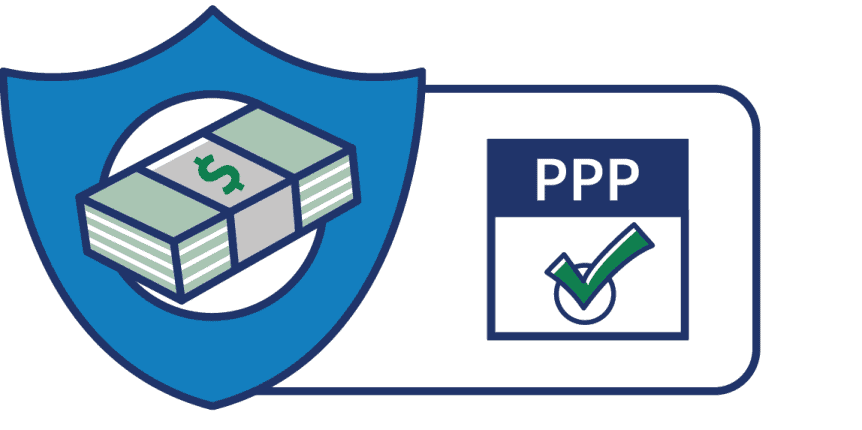One of the tenants of the Coronavirus Aid, Relief, and Economic Security Act (Cares ACT) is the Paycheck Protection Program (PPP), which initially authorized up to $349 billion of federally-guaranteed loans to qualifying small businesses. The funds are meant to be used for the following qualified expenses according to the CARES Act and SBA guidance:
- Payroll costs (up to $100k/yr per employee), including benefits
- Interest on mortgage obligations, incurred before Feb 15, 2020
- Rent, under lease agreements in force before Feb 15, 2020
- Utilities, for which service began before Feb 15, 2020
In order to easily track the payments made with the funds received from the Paycheck Protection Program, we recommend that you open up a separate bank account to ensure that PPP funds are not mixed with other funds, and allow for an easy documentation of expenses incurred.
If your funds are used for the qualifying expenses above, they will more than likely be forgiven. However, 75% of the forgiven amount must be used for payroll. Forgiveness will also be reduced if full-time headcount declines, or if salaries and wages decrease, during the eight-week period that is covered after receiving your loan.
Forgiveness Calculations
The rough calculation for how much of your loan can be forgiven is determined by dividing the average full-time equivalent (FTE) headcount during the eight-week covered period by the average FTE headcount during on of the following periods (borrower chooses):
- Feb 15, 2019 to Jun 30, 2019
- Jan 1, 2020 to Feb 29, 2020
UPDATE — via Paycheck Protection Program Flexibility Act
The SBA now allows borrowers to choose between an eight-week covered period or to extend their forgiveness to a twenty-four-week period.
This change will give your business more flexibility, and a longer time-frame to hit the forgiveness thresholds. Hopefully, withing the twenty-four-week period, you’ll be able to fully re-open your business and hire back any furloughed staff at their pre-pandemic wages.
This result is multiplied by the loan proceeds spent on qualified expenses to determine the total amount that is eligible to be forgiven. Please note the example below:
- Loan Amount: $100,000
- Amount Spent on Covered Expenses: $80,000
- Average FTE headcount from Feb 15, 2019 to Jun 30, 2019: 10
- Average FTE headcount during covered period: 9
- PPP FTE Calculation: 9/10=90%
- Maximum Loan Forgiveness: ($80k * 90%) = $72,000
In the case of a headcount reduction, the CARES Act has a provision stating that if the decrease in employee headcount and wages is eliminated by June 30, 2020 then the forgiveness amount will not be reduced.
UPDATE — via Paycheck Protection Program Flexibility Act
You now have up to twenty-four weeks to restore your head count and wage levels.
Please note that if the borrower decreases wages by more than 25% for any employee making less than $100,000 annually, then a portion of the loan may not be forgiven.
In the case of a headcount reduction, the CARES Act has a provision stating that if the decrease in employee headcount and wages is eliminated by June 30, 2020 then the forgiveness amount will not be reduced. Further, if the employer makes a good faith, written offer of employment and the employee’s rejects the offer, then the forgiveness amount will not be reduced.
Amounts spent outside of the eight-week covered period, or outside of the four deductible categories will not be forgiven, and will have a term of two years, with an interest rate of 1%.
UPDATE — via Paycheck Protection Program Flexibility Act
Previously, you also had to spend at least 75% of the loan on payroll expenses. That percentage is now 60%, however, if you do not hit that threshold, then none of the loan is forgiven.
If your business has a high percentage of their expenses allocated toward rent (ie, restaurants), then this change will make it easier for you to hit the repayment threshold.
Loan Forgiveness Timeline
Before the Paycheck Protection Program Flexibility Act was passed, the repayment timeline was two years. Now, the timeline has been extended to five years and the interest rate will remain at 1%.
The longer repayment schedule will help streamline your business’s cash flows and allow for increased flexibility with the use of your valuable working capital.
Can The Loan Be Fully Forgiven?
It seems like there is a gap in the PPP’s calculations that do not make it possible for a fully forgivable loan. This is due to their covered period being eight-weeks and the disbursement of funds being based on 2.5x average monthly payroll.
If payroll costs are held constant during the eight-week covered period, then only 73.85% of the loan can be spent on payroll — [8 wks / (52 wks x (2.5 mos/12mos))] = 73.85%. Since overhead (rent, interest, etc) cannot exceed 25% of the forgiveness amount, there is 1.53% of the loan (73.85% / 75.00%) that cannot be forgiven. Currently, it seems like the only way to get your loan fully forgiven would be to increase your payroll costs during this eight-week period. This is likely a drafting error, that will hopefully be modified in the near future.
SBA Website & PPP Guidelines
For additional information on the Paycheck Protection Program, you can check the SBA’s website.
Lanyap Financial is a tech-based accounting and financial services firm that specializes in streamlining their clients’ financial operations through FinTech software and cloud-based applications.





